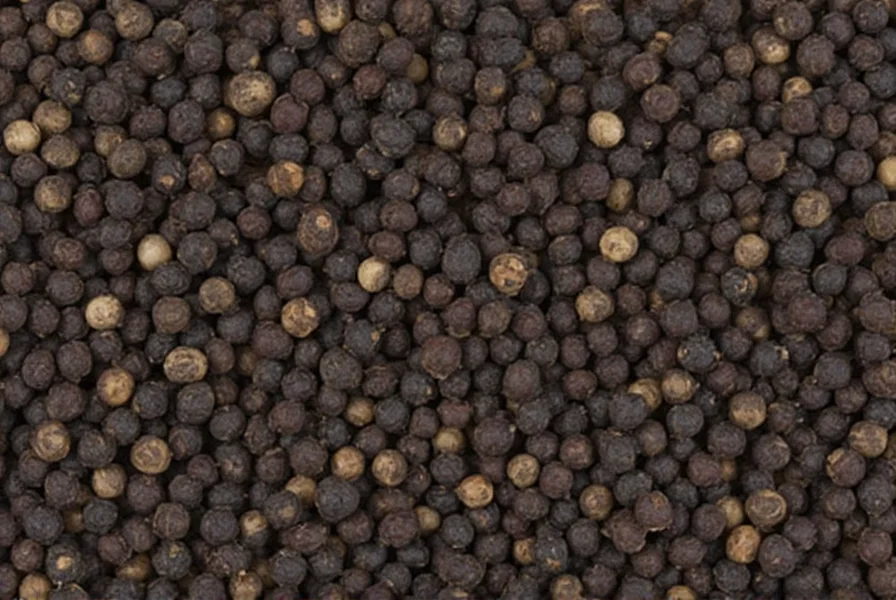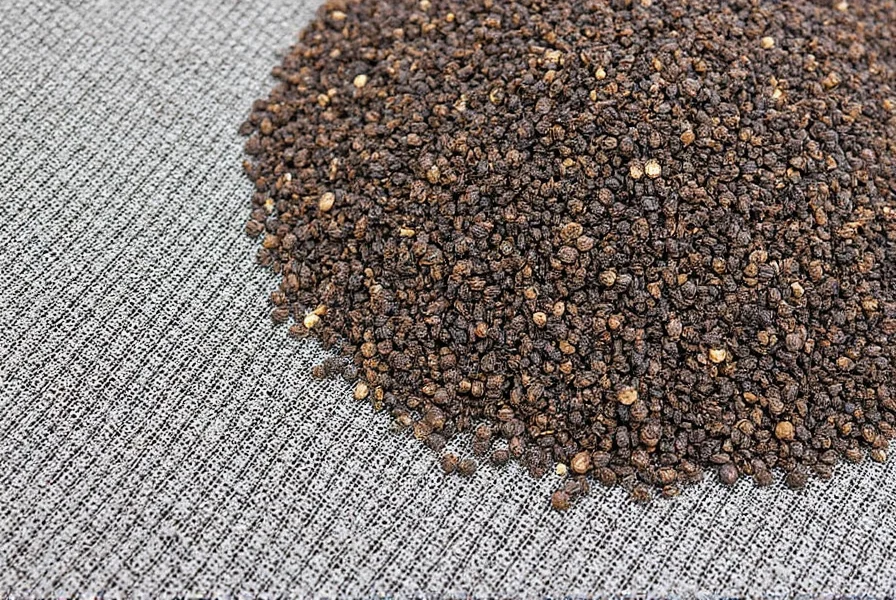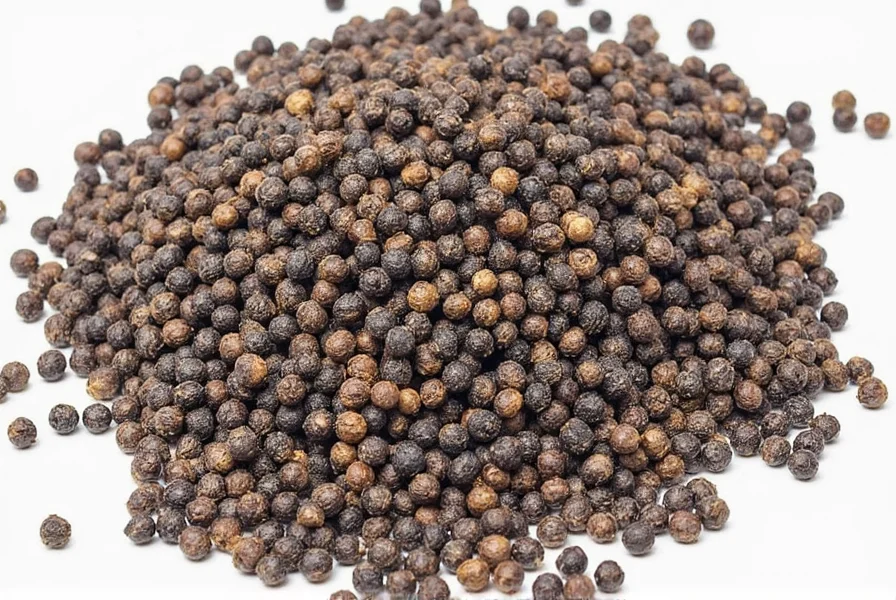Understanding mesh sizing is essential for professionals in the food industry who require precise specifications for their products. The mesh number directly correlates to particle size, with lower mesh numbers indicating coarser grinds. In the spice industry, consistent particle measurement ensures uniform flavor release, proper mixing, and predictable performance in manufacturing processes.
What Mesh Size Means in the Spice Industry
Much like a grading system for particle size, mesh measurement indicates how many openings exist per linear inch in a sieve. When black pepper is described as "16 mesh," it means the pepper particles will pass through a sieve with 16 openings per inch but will be retained by a finer sieve (typically 20 mesh). This standardized measurement system allows spice producers and food manufacturers to communicate precise size requirements.
The mesh system provides consistency across the global spice trade, ensuring that when a food manufacturer in Europe orders "16 mesh black pepper" from a supplier in Vietnam, both parties understand exactly what particle size they're discussing. This standardization is particularly important for industrial food production where consistency directly impacts product quality.
Technical Specifications of Black Pepper 16 Mesh
Black pepper 16 mesh has specific physical characteristics that distinguish it from other grind sizes. Understanding these specifications helps food scientists and product developers select the appropriate pepper for their applications.
| Mesh Size | Particle Diameter (mm) | Typical Applications |
|---|---|---|
| 8 mesh | 2.38 | Coarse grinding, specialty applications |
| 12 mesh | 1.68 | Medium-coarse blends, some meat rubs |
| 16 mesh | 1.19 | Food manufacturing, consistent spice blends |
| 20 mesh | 0.84 | Standard ground pepper, general cooking |
| 30 mesh | 0.59 | Finely ground pepper, ready-to-eat meals |
The precise particle size of 16 mesh black pepper (approximately 1.19mm) creates a balance between surface area for flavor release and particle integrity for manufacturing processes. This specific size prevents excessive dust formation while still providing adequate flavor dispersion in food products.
Primary Applications of 16 Mesh Black Pepper
Food manufacturers select 16 mesh black pepper for specific reasons related to production efficiency and product quality. Unlike retail ground pepper which varies significantly by brand, industrial applications require consistent particle size for predictable results.
One of the most common uses of black pepper 16 mesh is in dry spice blend production. The uniform particle size ensures even distribution with other spices, preventing separation during packaging and transportation. This consistency is critical for maintaining flavor profile integrity across production batches.
Another significant application is in meat processing facilities. The 16 mesh size provides sufficient surface area for flavor release while maintaining enough structural integrity to withstand tumbling and mixing processes without becoming dusty. This particular grind size also works well in automated seasoning application systems that require consistent flow properties.
Food manufacturers developing ready-to-use products often specify 16 mesh black pepper because it offers a noticeable pepper presence without being overly coarse or creating an unpleasant mouthfeel. The particle size is large enough to be visually identifiable in finished products while still dissolving appropriately during cooking or consumption.

How 16 Mesh Compares to Other Black Pepper Grinds
Understanding the differences between mesh sizes helps food professionals select the appropriate grind for their specific application. While 16 mesh serves particular industrial purposes, other sizes work better for different scenarios.
Compared to 8 mesh black pepper (approximately 2.38mm), 16 mesh is significantly finer and provides more surface area for flavor release. The 8 mesh variety is often too coarse for most manufacturing applications, though it works well for specialty products like certain meat rubs where visible pepper pieces are desirable.
When contrasted with 20 mesh black pepper (0.84mm), 16 mesh offers slightly larger particles that maintain better structural integrity during processing. The 20 mesh size is more common in retail ground pepper products but may become too fine for some industrial applications where separation or dust formation becomes problematic.
For applications requiring extremely fine particles, 30 mesh black pepper (0.59mm) might be specified, but this size often creates excessive dust and can lead to flavor inconsistencies as the smallest particles may burn more easily during cooking processes.
Quality Considerations for Black Pepper 16 Mesh
When sourcing black pepper 16 mesh for industrial applications, several quality factors beyond particle size must be considered. The mesh size specification alone doesn't guarantee product quality, as inferior pepper can be processed to meet any mesh requirement.
Professional buyers evaluate black pepper 16 mesh based on multiple criteria including volatile oil content (which affects flavor intensity), moisture content (critical for shelf stability), and freedom from extraneous matter. High-quality 16 mesh black pepper should have a minimum volatile oil content of 2.5% and moisture content below 12% for optimal shelf life.
The color consistency of black pepper 16 mesh also matters for certain applications. Premium grades maintain a uniform dark brown to black color, while lower quality products may show significant variation indicating inconsistent processing or aging. Food manufacturers developing products where pepper visibility matters should request color specifications along with mesh size requirements.

Processing Methods for Achieving 16 Mesh Black Pepper
Creating consistent 16 mesh black pepper requires specialized equipment and careful quality control. The process begins with whole black peppercorns that undergo cleaning and sorting before grinding.
Modern spice processing facilities use precision grinding equipment that can be calibrated to produce specific mesh sizes. After initial grinding, the pepper passes through a series of vibrating screens with precisely measured openings. The 16 mesh fraction is collected between the 16 mesh and 20 mesh screens, ensuring particles fall within the desired size range.
Quality control laboratories regularly test production batches using standardized sieve analysis to verify that the product meets the 16 mesh specification. Reputable suppliers provide certificate of analysis with each shipment, detailing not only the mesh size compliance but also other quality parameters like moisture content, volatile oils, and microbiological safety.
Industry Standards for Black Pepper Mesh Sizes
The spice industry follows several standards for mesh sizing, though regional variations exist. In the United States, the Tyler Standard Sieve Series is commonly referenced, while European manufacturers may use the ISO 3310-1 standard. Despite these different systems, the mesh numbers generally correspond to similar particle sizes across standards.
When specifying black pepper 16 mesh for international procurement, it's advisable to include both the mesh number and the equivalent millimeter measurement (1.19mm) to avoid confusion. Some contracts also specify the percentage of material that should pass through adjacent sieve sizes to ensure consistency.
Food safety regulations may also impact black pepper 16 mesh specifications, particularly regarding foreign material limits and microbiological standards. Reputable suppliers adhere to strict quality control protocols that exceed basic mesh size requirements to ensure product safety and consistency.











 浙公网安备
33010002000092号
浙公网安备
33010002000092号 浙B2-20120091-4
浙B2-20120091-4